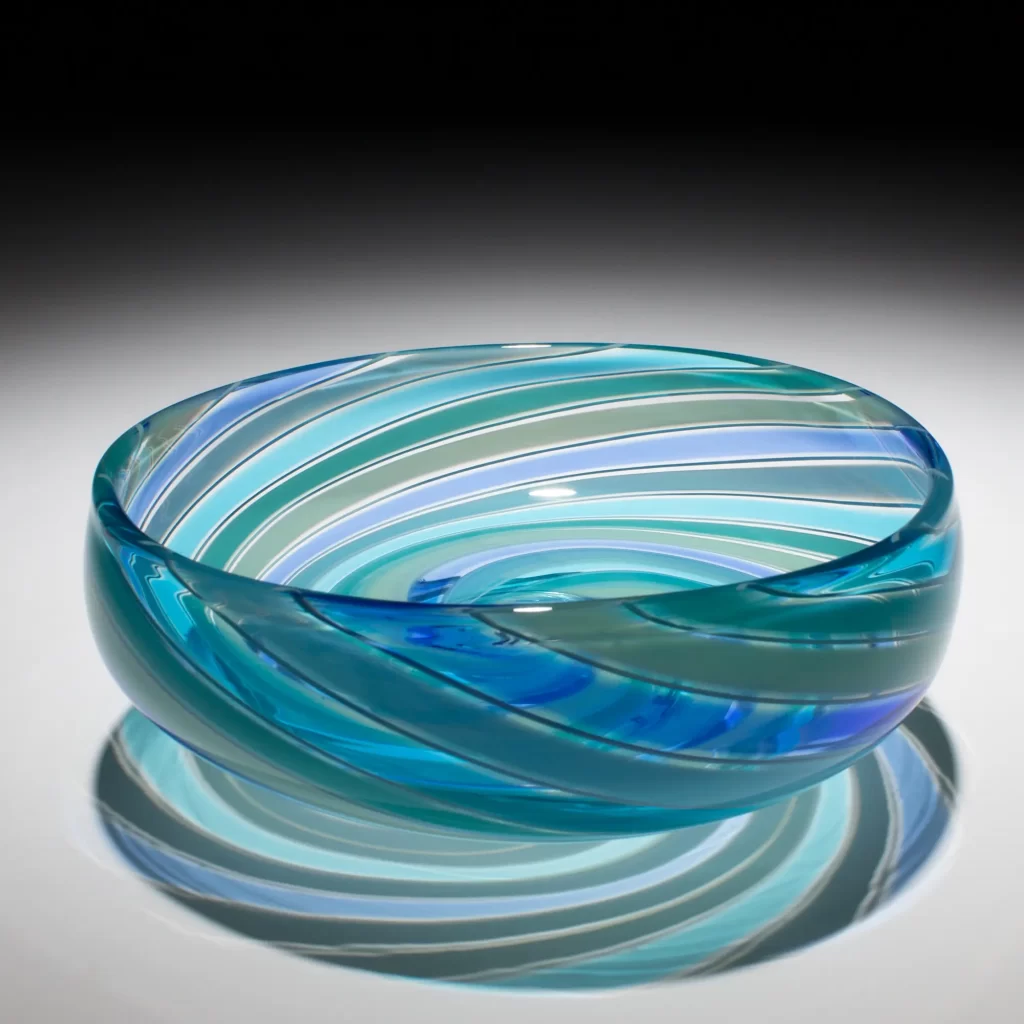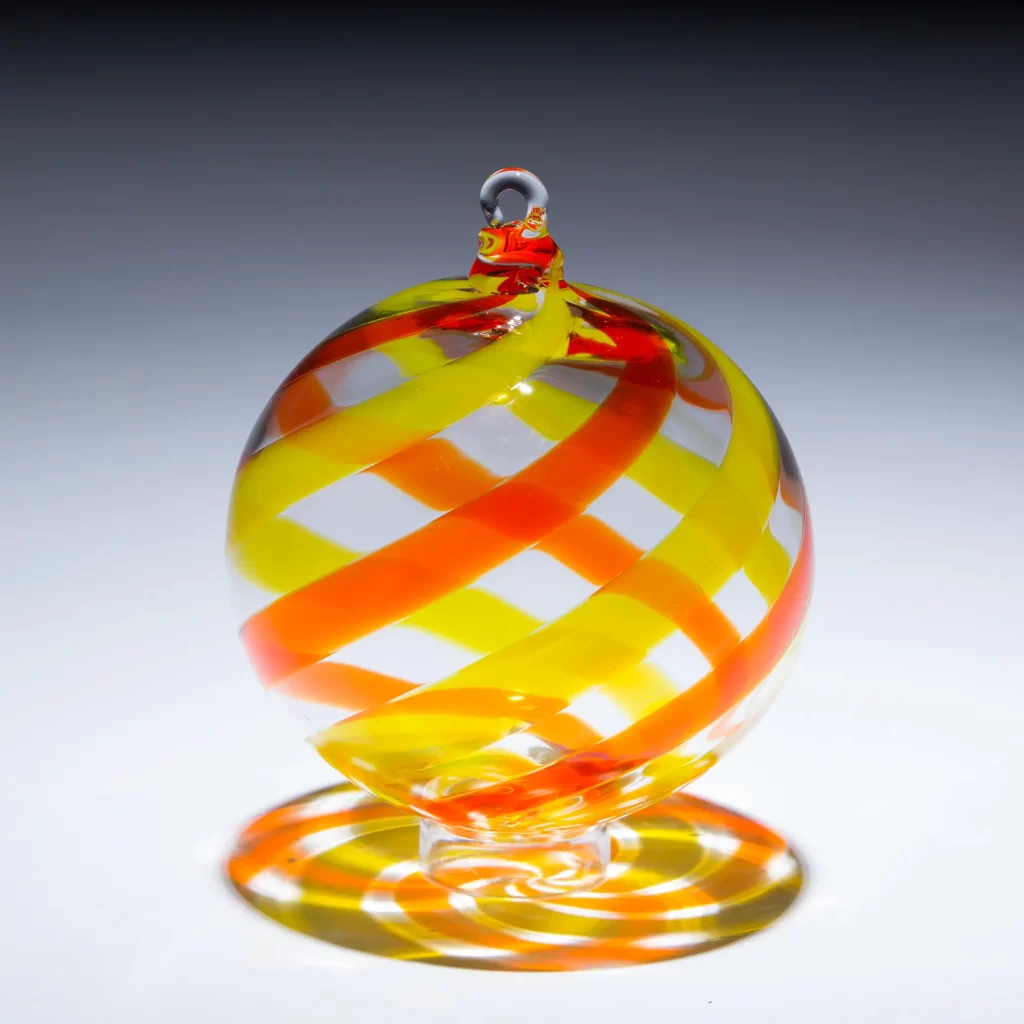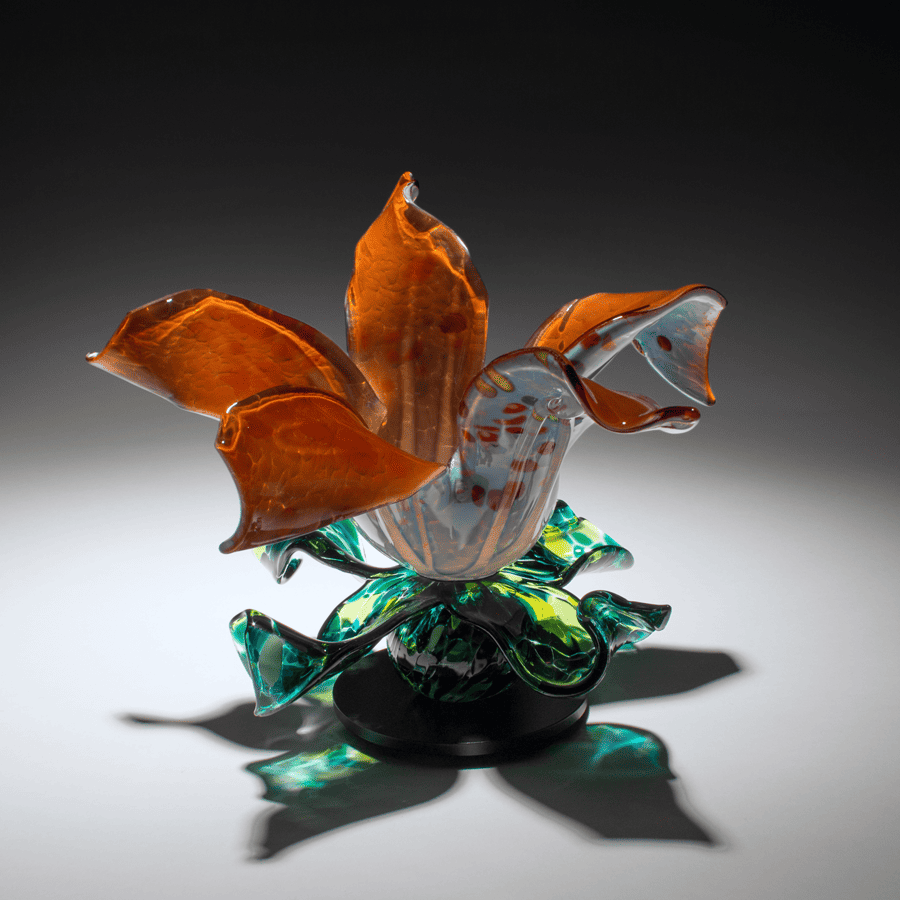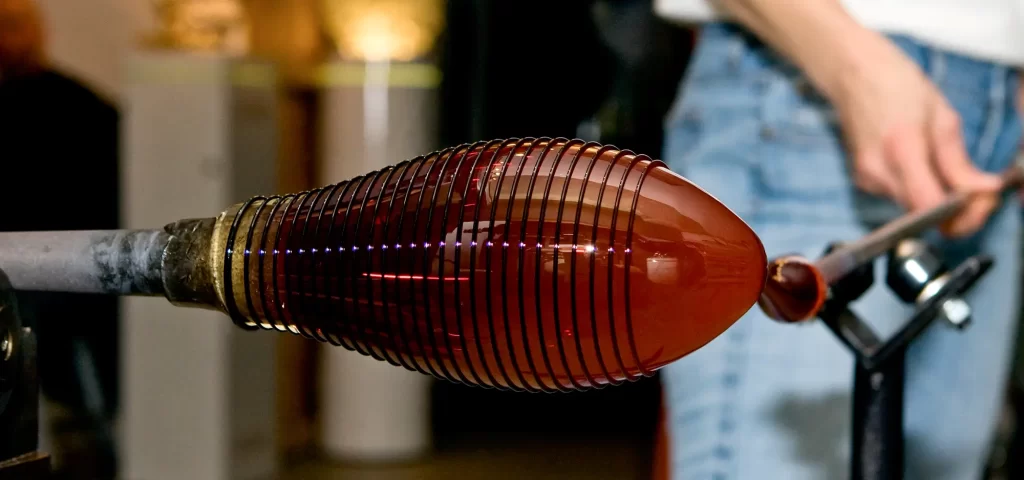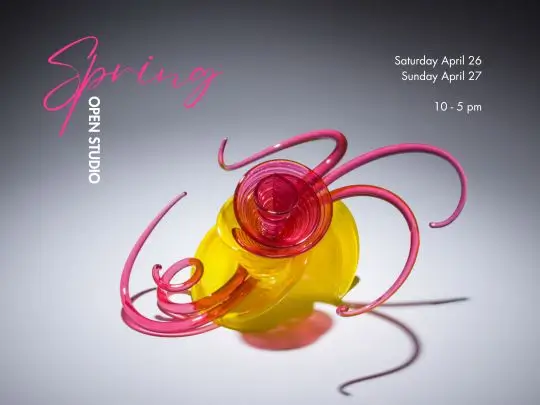Ever seen the blown glass process and wondered “I know I just saw that but HOW did it happen?” This is the magic of molten glass! The blown glass process happens right before your eyes but still remains a mystery. We’re going to take an insider’s look at molten glass, looking a little bit at its history, how it’s used in industry, and how it’s used to create blown glass artworks. Let’s dive in!
History
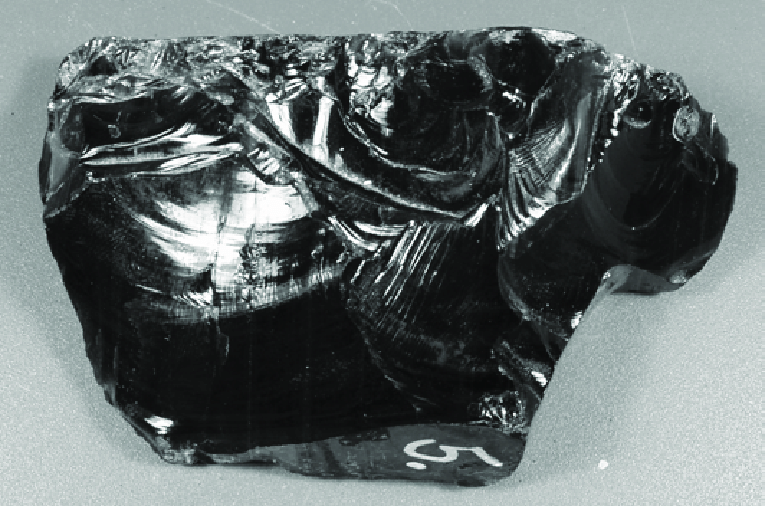
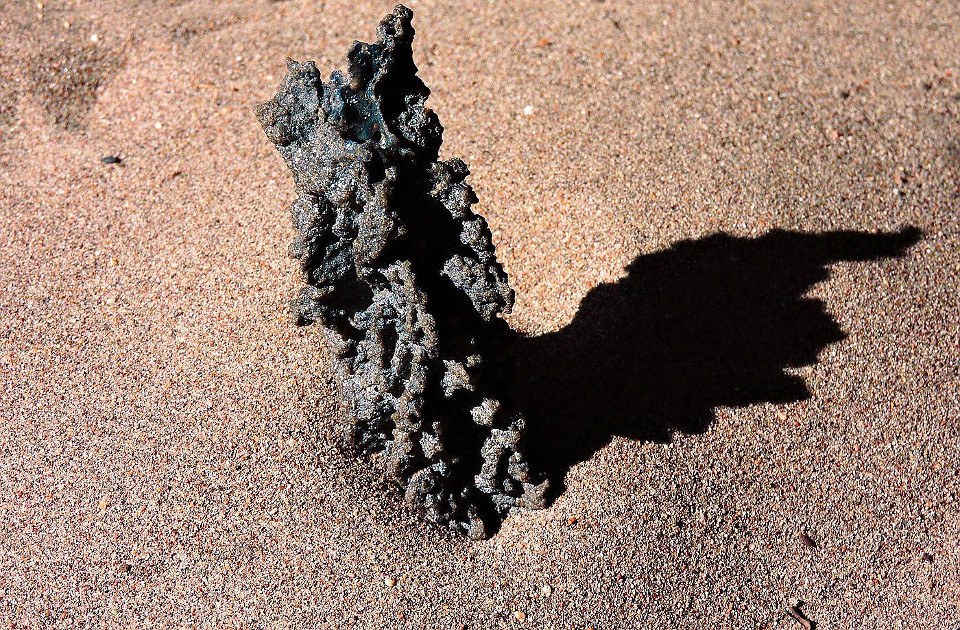
Glass first existed in nature as lava flow called obsidian glass, and when lightning strikes sand or rock, called fulgurites. Early man used these glasses for tools and weapons. Inspired by the processes of nature, humankind used the technique of combining intense heat to melt a flux with sand. We don’t exactly know how they figured out the right mix of ingredients. This happened in the middle east in 2000 BC, that’s over 4000 years ago! There is a lot of speculation, but we attribute it to the fabulous brainpower and curiosity of people.
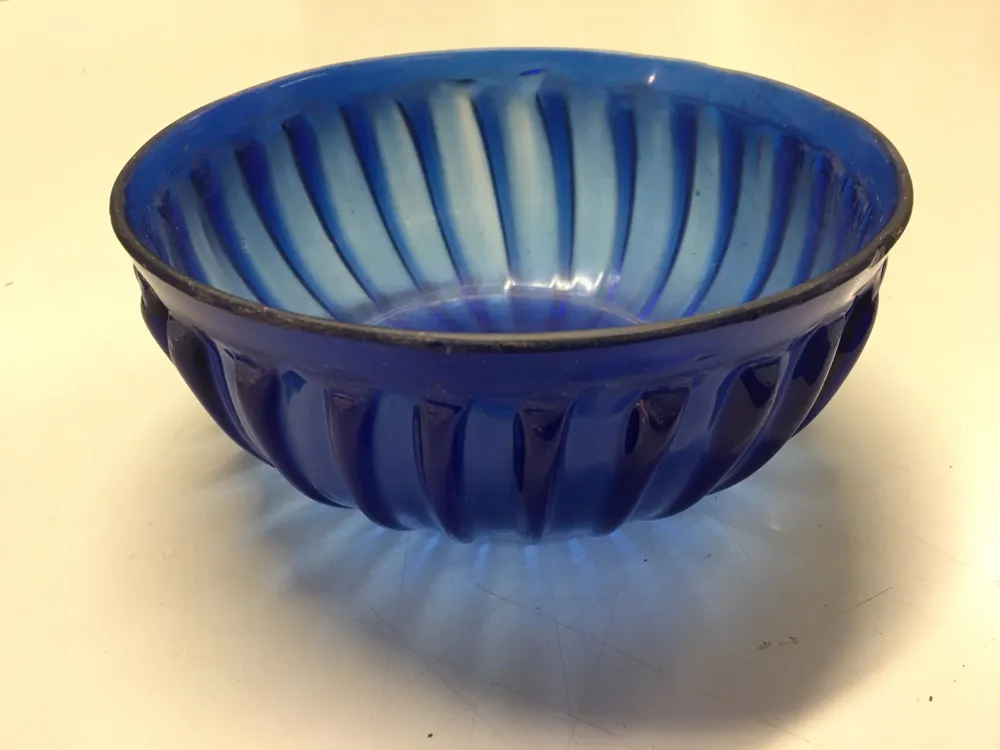
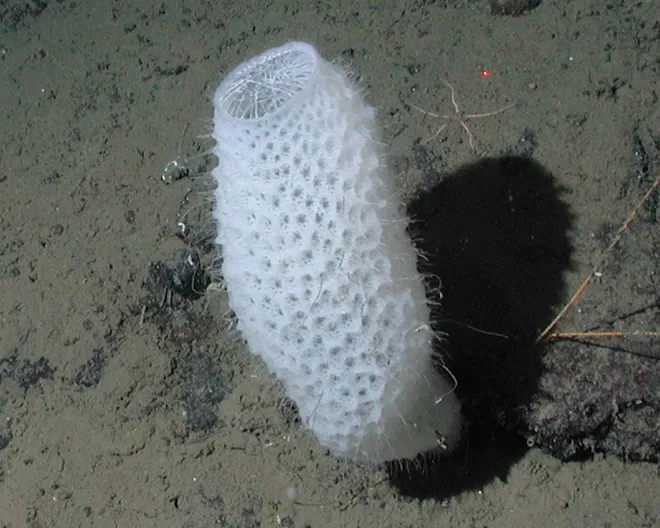
The Italians & Their Blown Glass Process
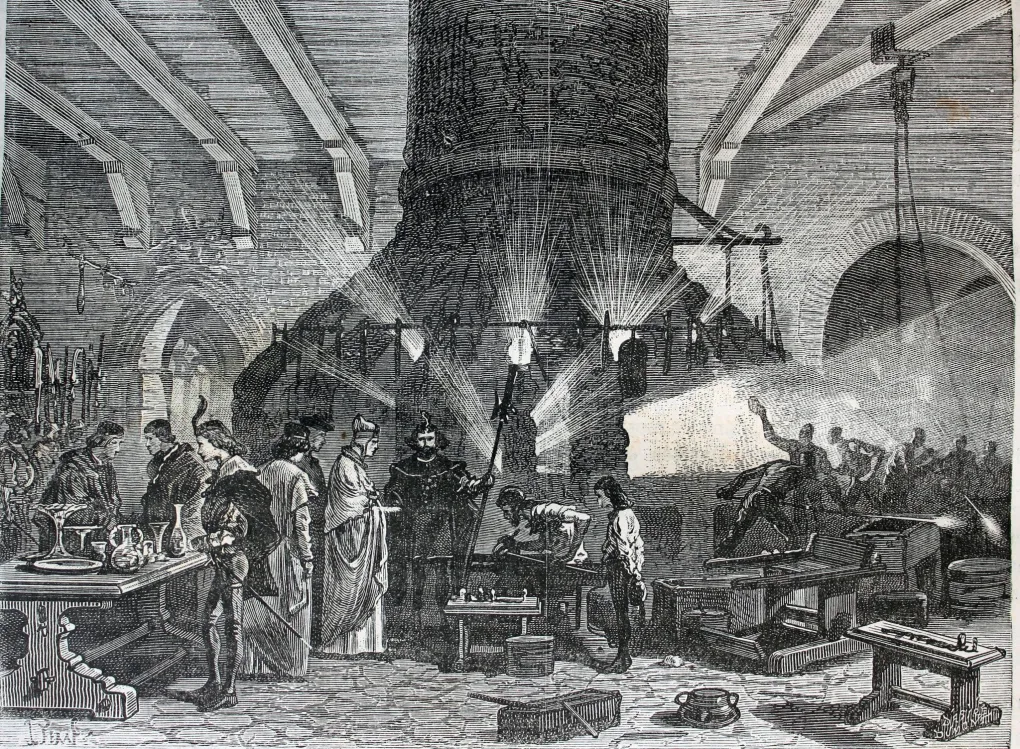
Fast forward to Italy in the 1200’s. The Venetians took molten glass to the next level. They put it on the end of a hollow tube and used their breath to blow glass into intricate and unique shapes, unlike any others before them. We can credit them with the biggest advancement the art glass scene has experienced. Fear of fire caused the Venetians to move their glassblowers to the island of Murano, protecting the city from stray flames. This also protected many of the secret recipes for special glasses and colors from foreign spies. Blown glass was for the wealthy, adored by the royals and the powerful, and keeping the secrets of blown glass was a big priority.
Many of the tools and techniques the Italians perfected are ones that we still use in glass blowing today. A trip to the beautiful island of Murano is a must for any glass lover. The beautiful blown glass artworks they create are the epitome of the craft, and being on the island is a romantic, wonder-filled experience. Insider tip: You won’t want to miss the studio of Simone Cenedese, he is a true Maestro.
Industrial Glass
Glass isn’t just used in art. It is also used in industry and can be credited for shaping much of the history of our modernization. Often overlooked (because it’s clear!) glass has been pivotal in the development of industry. From automotive and architecture, science and health, electronics and space, glass is everywhere. It allows us to see and be seen. Can you imagine a life without cell phones and computers? Or without the Hubell or Webb telescopes out in space? We can’t either, and without glass we wouldn’t have them.
Art Glass
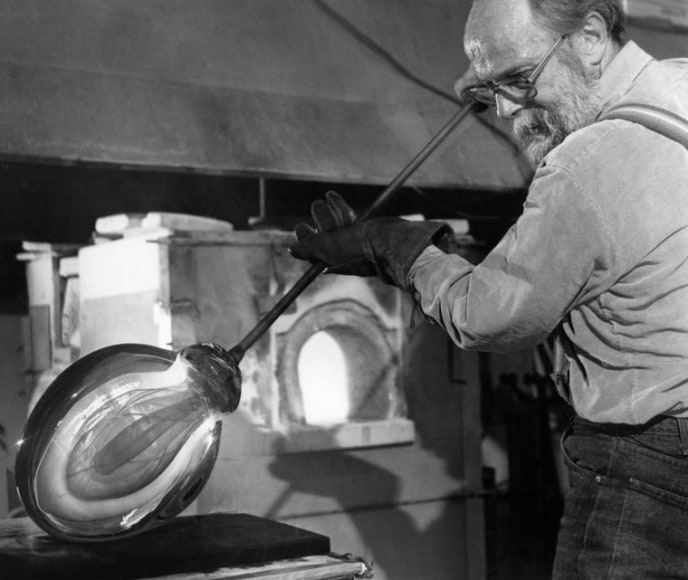
The use of glass by artists is fairly recent. In the United States the blown glass process was a revolution in thought, started by Harvey Littleton in the 1970’s at the University of Wisconsin Madison. With a whole lot of curiosity and courage he sparked a fire that ignited and produced the likes of glass giants like Dale Chihuly and inspired universities around the country to start accredited and community-based glass blowing programs. One of the most noted schools is Alfred University in upstate New York, renowned for both its art glass programs and its scientific glass programs. The marriage of these two types of thinkers on one campus has led to breakthroughs for both. Art and science go hand in hand after all.
So how do you Blow Glass?
This is a big question! Let’s break it down into all the practical steps.
Where Do You Learn?
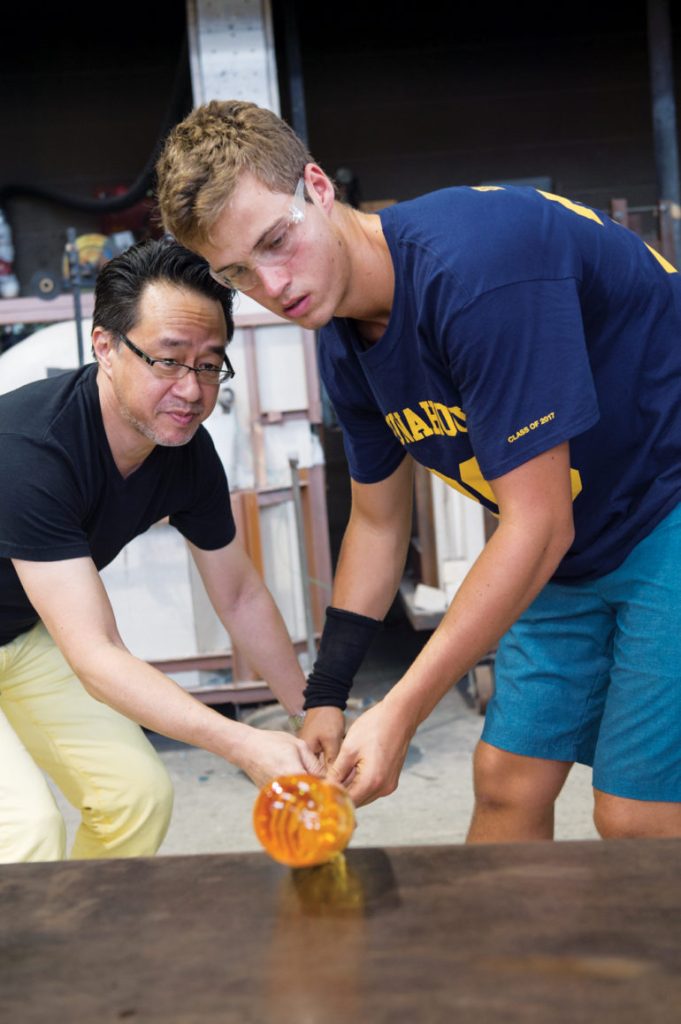
As mentioned above you can go to school to learn to blow glass, but you can also follow a more traditional path and intern with a master. In Italy children start learning to blow glass as young as the age of 6! While that is not common in the Unites States there are a couple of high schools that offer glassblowing like the Punahou School in Honolulu. But not all of us are lucky enough to live in Hawaii so you can also look at local art centers or private artists’ studios to see if they teach glassblowing. If you aren’t ready to commit to a long-term investment trying a one-day glass blowing workshop might be just the thing for you. We also recommend you check out the reality TV show Blown Away. While exaggerated and dramatic, it will give you an idea of how much work blowing glass really is.
What to Expect
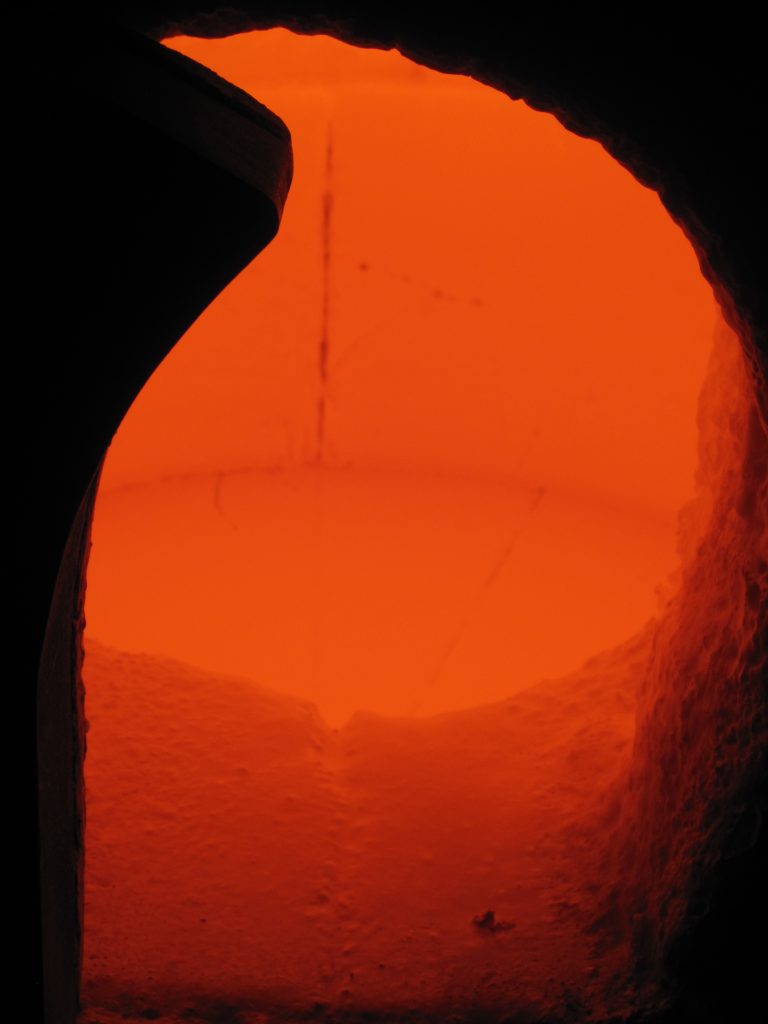
It’s hot. Don’t like the heat? Then blowing glass is definitely not for you. And when we say hot, we mean HOT! The furnaces run at 2000 degrees. That’s not as hot as the surface of the sun, but it is 4 times hotter than your oven gets at home. And that’s just one piece of equipment. You need more than that in the studio.
It’s intense! The magic of molten glass is that it is a liquid that turns into a solid during the blown glass process. You have to keep turning the rod it is on and if you stop turning the glass will fall to the ground. You can’t stop to answer the phone or use the bathroom or visit with a friend. Once you have started making a blown glass piece, you are committed until you’re finished with the piece. There is no other artform quite like blowing glass.
Time matters. The faster you can work the better. Once you take the glass out of the furnace, it starts to cool off. As it cools it gets harder to work and shape so you have to reheat the glass but it doesn’t heat evenly so you have to compensate constantly. Working faster is a great way to capture the beauty of the glass as a molten material and avoid a lot of tool marks.
It takes teamwork. Glass blowing can be done alone, but you are very very limited with what you can accomplish. Working in teams offers you the opportunity to incorporate more techniques and colors, and really to have a lot more fun!

It takes years to learn. Glass blowing is made up of a complex assortment of visual tools and intuition. You have to learn to think like the glass does. This is a material you can’t touch with your hands (remember – 2000 degrees!) so you have to use a multitude of hand tools to touch the glass. They each do different things and are good or bad at different times. But before you even touch the tools you have to see with your eyes. This is the hardest part. Without getting too deep into it, you have to be able to tell by the color of the glass what its temperature is and you have to understand the physics of centripetal force and centrifugal force all while turning the end of a 4’ steel rod. Your hands and your eyes have to work together to do what your brain wants. Sounds easy? It’s not.
It’s expensive. Why you might ask, it’s just sand. Yes, glass is just sand, but it is also so much more. There’s a lot to dig into with this one so let’s break it down.
Raw Materials
Blown glass uses a very certain kind of sand, mixed with very pure ingredients. Plain old sand won’t melt at 2000 degrees. It needs a flux to create a eutectic mixture, which means the melting point is lowered. Soda Lime is the most common mixture of sand and flux used for blown glass art. The nicest Soda Lime glasses contain lithium which has become a precious resource now that we are making so many batteries, causing the cost of Soda Lime glasses to skyrocket. Creating this mix of materials for glass blowing artists is a hazardous process and is only done by a couple of factories in the United States.
Soda Lime is the clear glass. Now let’s talk about colored glasses. Glass gets its color from different mineral and metallic oxides. Copper is a great example. Depending on what it is mixed with copper in glass it can either be red, green, or blue. Some glass artists will make their own colors, but many artists rely on European manufacturers to produce the base colors for them. Some of the most expensive colors are made using gold, so imagine those costs!
Equipment
To melt glass, you need a glass furnace. This is a highly specialized piece of equipment that is handmade from refectory castables with a sophisticated, computerized burner system that lets you get to those super-hot temperatures. A glass furnace is not something you can buy at Home Depot. Some artists opt to make their own furnaces, and this was the only way you could get a glass furnace until the late 1990’s. Today there are a small group of expert glass furnace makers around the United States. A mixed group of glass lovers, engineers and tinkers, they make really nice equipment for the artist’s glass studio.

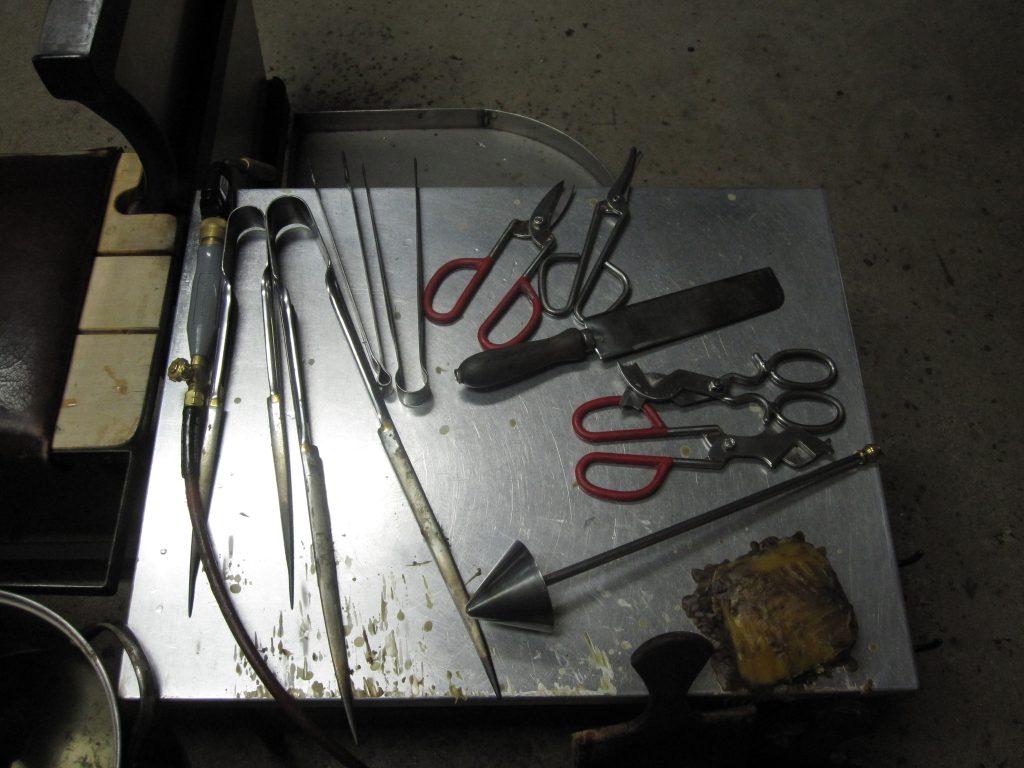
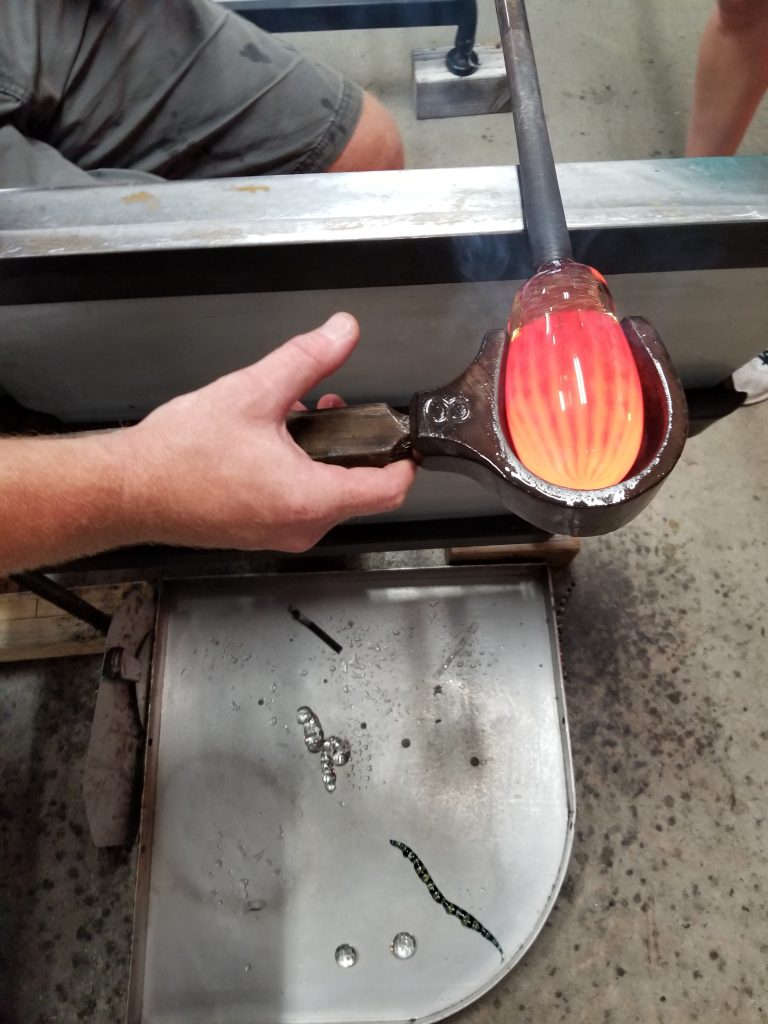
You need more than the furnace. You also need an annealing oven. An annealer, often confused with the more commonly known ceramics term kiln, is the computerized oven where you put the glass to cool. Once you make the glass you cannot just set it out at room temperature. The glass needs to cool in a very slow and controlled manner so that is doesn’t break. “Annealing” is the opposite of tempering. Tempered glass is a glass that has been rapidly cooled to induce a specific type of stress so the glass will break in a certain way. Annealing is the slow cooling process of removing stress. Soda Lime glasses like to begin annealing at 910 degrees.
The furnace and the annealer are the two most basic pieces of equipment you need to start. There are many more things you will want to make the process easier, like a glassblowing bench, a pipe warmer, a color warmer, and a pipe cooler.
Insider tip: Spiral Arts makes some of the very best glass shop equipment. We had our Spiral Arts 800# day tank with an invested AZS liner last us over 20 years!
Now let’s talk about the hand tools. There is such a wide variety we’ll only touch on the basics. You need blowpipes (hollow) punti rods (solid), jacks, tweezers, straight shears, diamond shears, paddles, molds, torches, and on it goes! All of these tools are handmade, some in the United States but also from the old Venetian families who have been making them for decades. Cared for properly these tools will last you a lifetime. Some of our favorite tools we’ve been using over 30 years and they still work great.
Insider tip: Clean your metal tools with mineral spirits. It conditions the metal and prevents then from rusting.
Studio
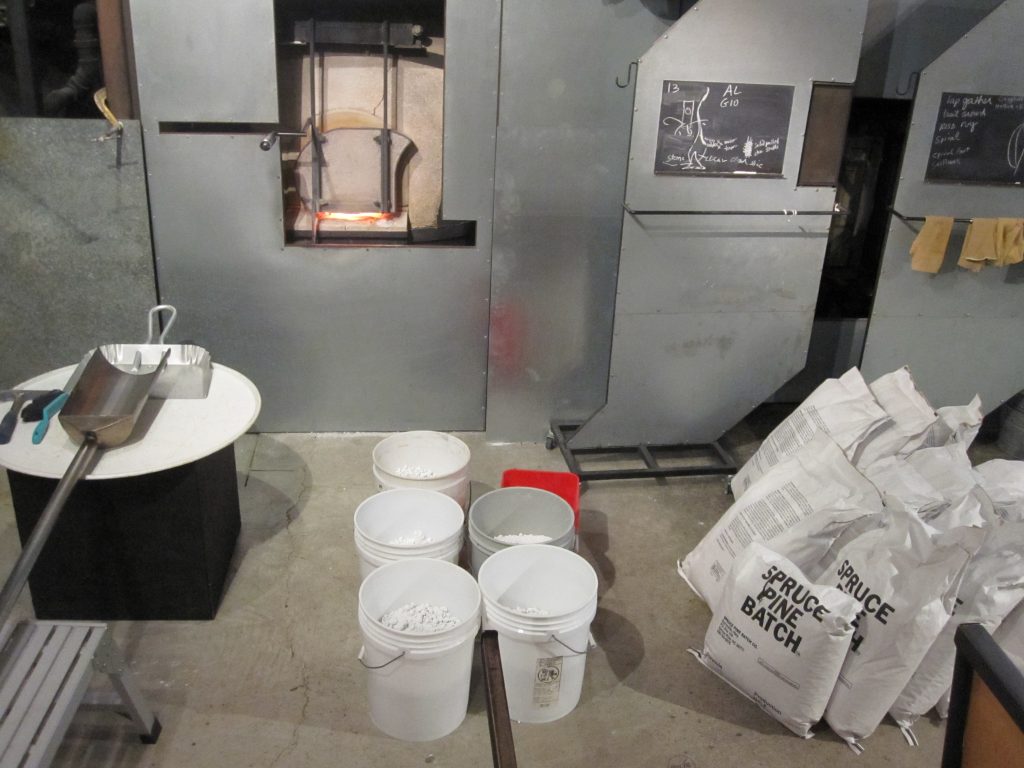
Unlike painting, which you can do anywhere, glass blowing needs a dedicated space. You have to put all of this equipment somewhere and it requires special ventilation and electrical/gas service. As you can imagine, when you have equipment that is 2000 degrees it lets off a lot of heat. While there are some electric glass furnaces, many furnaces are powered by a natural glass/forced air system. This means they require fluing and air makeup. Often overlooked when artists set up their shops, this is the most important factor in having a safe and healthy environment. The flue gasses are full of carbon monoxide which is toxic and can poison you if not vented correctly. While some people do build glass blowing studios in their garages, it is only possible with the door wide open for a constant supply of fresh air. We think this is a dance with danger though, and do not recommend it. Insider tip: You can spend more on the air make up system than you can on the equipment, but it is worth the investment. Do NOT skimp on this part! Nothing is more important than your health. Dead is dead.
So, let’s close this section by revisiting the thought that it’s expensive to blow glass and now you know why. You need a lot of equipment and tools that are handmade, you need precious raw materials, you need a dedicated workspace and, have we mentioned, you need to keep the glass hot. Depending on the size of the glass furnace it runs 24 hours a day, 7 days a week. Imagine the gas and electric bills every month!!!
The Fun Part: Blowing Glass
We’ve got the raw materials, the equipment, the hand tools, the studio space and we are ready for the fun part, blowing the glass! All pieces start out the same way, being “gathered” onto the blow pipe or the punti rod. What is gathering? It’s the process of getting the glass out of the furnace. You open the door of the furnace, dip the end of the 4’ rod into the molten glass and start turning the rod to “gather’ the glass onto it. Envision when you open a jar of honey and scoop some out, it’s a similar feeling. You might need to take multiple “gathers” to get enough glass to make the size piece you want. Small pieces equal less gathers, large pieces equal more gathers.

Then you move to the glass blowing bench and shape the glass using wooden molds, or you can roll the glass on the steel table, called a marver. Using a puff of air at the end of the blowpipe and trapping the air with your thumb, the glass will begin to expand. The moisture in your breath expands when it hits the heat of the glass, so it doesn’t take a lot of air, or particularly strong lungs. The hotter the glass the quicker it will expand. Like most things in life, too much air can be a bad thing but so can too little. The sensation is not dissimilar to blowing soap bubbles, you must be careful how you blow. Fun fact – if you blow the glass really, really hard when it’s hot it will expand so much that when the bubble burst the thin flakes will float in the air.
Watching and feeling the glass go from a liquid to a solid is a neat experience. It happens very quickly, so much so that you can almost miss it. Then you reheat the glass and it gets squiggly like a noodle again and the fun is really happening.
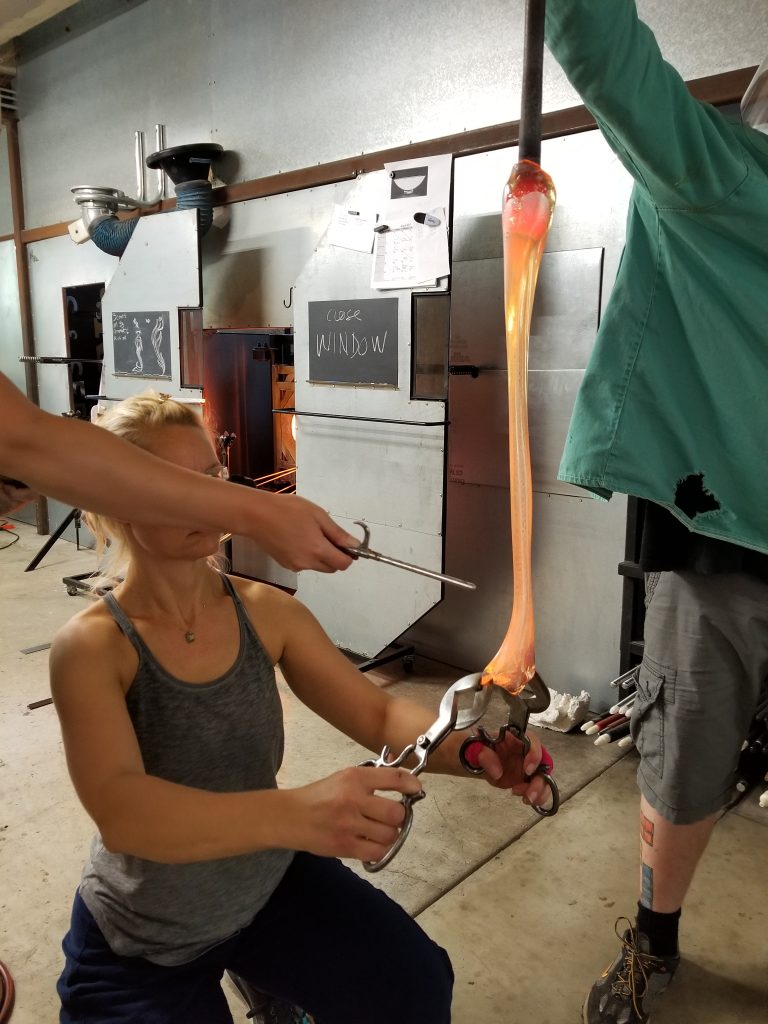
Once you have the basics down, the sky is the limit. Being creative with blown glass is easy. There are so many possibilities of what you can do. Should it be colored or clear, should it be solid or hollow, round or flat. There are so many choices! Check out some of the fun things we’ve made in our webstore.
Fun trick – Glass is an amorphous solid, meaning it has no crystalline structure, making it unlike EVERY other material in the world. What does this mean practically? If you and a friend want to have some fun take a gather of glass, hold the rod and have your friend pinch into the glass with a tool and start running as fast as they can. See how far away your friend can get, glass will stretch to infinity when it’s hot. This trick is the basis for fiber optics. Pretty neat!
Enjoy the Blown Glass Process
The magic of glass blowing is in learning how to control the material and enjoying the process. It’s like a wild animal and if you don’t want to just be along for the ride you have to learn how to communicate with it. By learning its language, you can enjoy all it has to offer and explore new territories of fun and delight. It’s such a fun experience, even if it’s not something you want to do for the rest of your life, you should definitely try it just once. Take it from this insider, you will not regret working with blown glass. You will walk away with memories to last a lifetime and artwork that is unique just to you. It will make you truly appreciate the masters who have worked with the material for decades and use their flawless techniques to create the beautiful artworks we all enjoy.
Want to know more? Check out our ‘Why is Glass so Expensive?‘ blog and our ‘Art Glass‘ blog.
